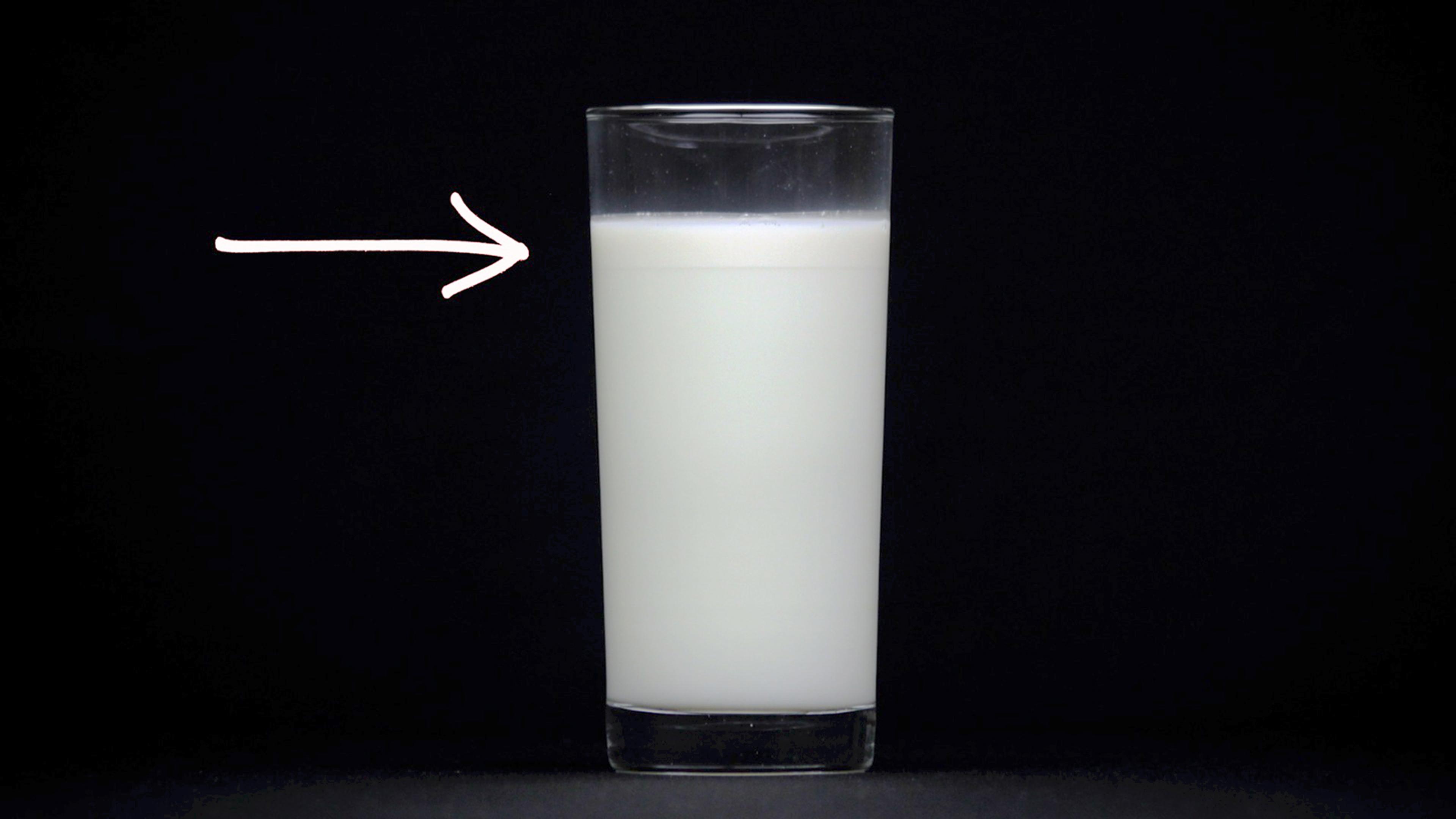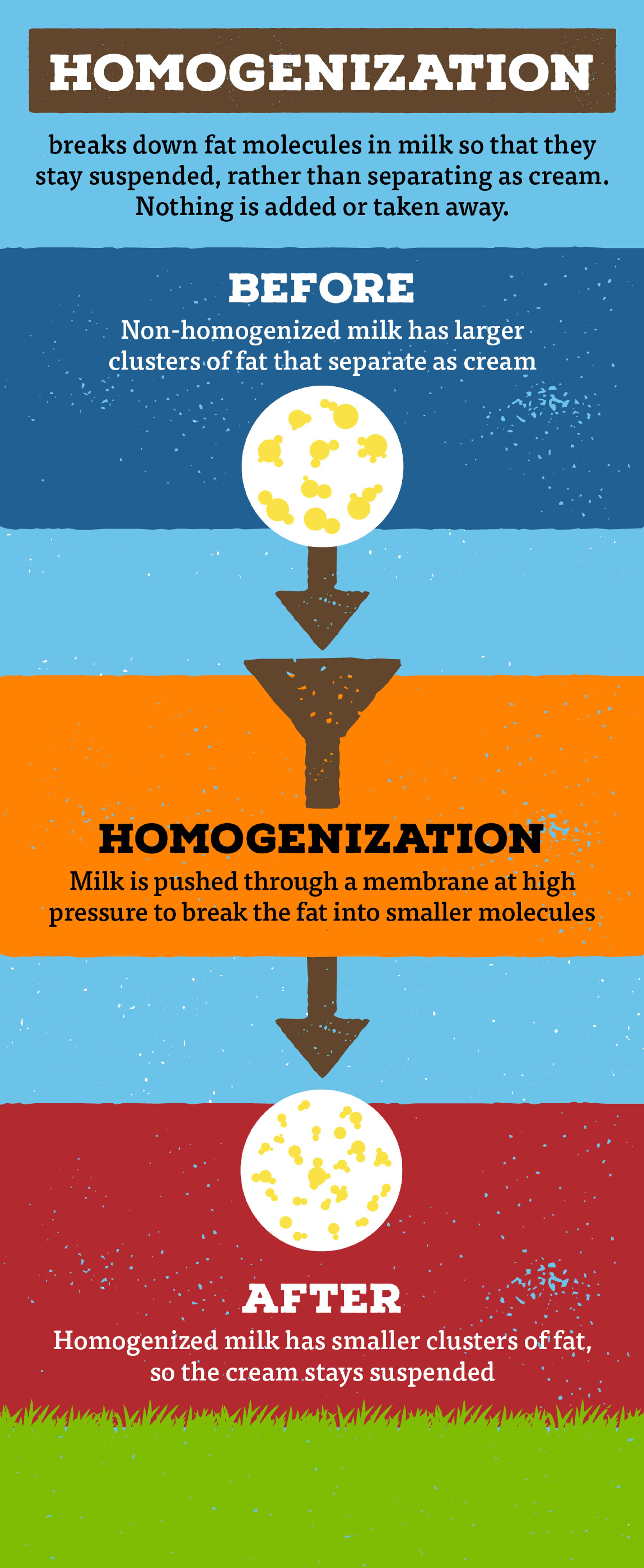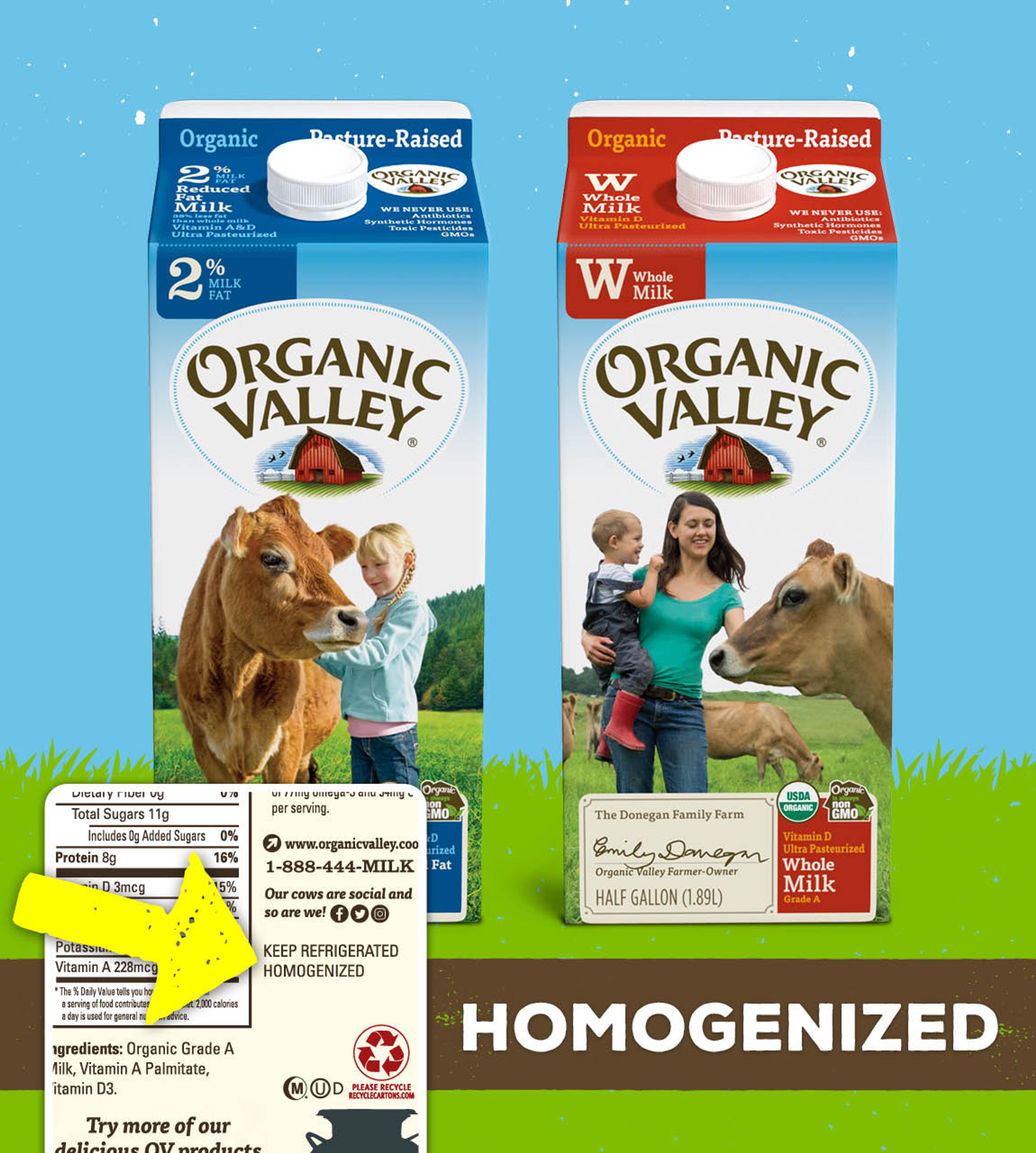
Food
What’s the Difference Between Homogenized and Cream-on-Top Milk?
What’s the difference between homogenized and non-homogenized (or “cream-on-top”) milk? It’s all about fat breakdown.

Fat molecules in milk are very sociable. They want to get together. When they do that, they form a luscious layer of cream that rises to the top of a container of milk. You can break up the molecular party by stirring them back into the underlying skim milk.
That kind of separation in milk used to freak folks out, especially if they didn’t grow up on a dairy farm. To them, it looked like something was wrong with the milk, like it had curdled, but it’s not the same thing. Risen cream looks smooth on top.

In the 1920s, milk processors figured out a way to stop that separation from happening. It’s called “homogenization” (from the word “homogeneous,”’ as in making everything uniform throughout). It may be a long word, but it’s a surprisingly simple process.
They discovered you can blend the fat into the milk in mere minutes with a machine. During homogenization, milk is heated, agitated, and passed through a membrane at high-pressure. This process makes the fat particles so teensy that they stay suspended in the milk and no longer rise to the top. Ergo, homogeneity. Best of all, since homogenization is a purely mechanical process (no chemicals or additives involved), it doesn’t change any of the milk’s natural goodness. Nutrition? Same. Calories? Same.

Organic Valley homogenized milk says “homogenized” on the nutrition side panel.
If you prefer that old-timey, straight-off-the-farm kind of milk, then you can look for “non-homogenized” or “cream-on-top." This is more common in regional or local milks that don't have to travel very far (otherwise, the shaking during transit can turn the cream into butter while still in the carton!). You can do all kinds of stuff with cream-on-top milk, like dip out a spoonful of the thick, separated cream at the top of the container and spread it on fresh strawberries (nirvana!), or smear it over toast with a touch of jam.
If you don’t have time for such shenanigans, then you’ll prefer milk that’s pre-stirred, as in homogenized. In the United States, the FDA definition of milk is “homogenized,” which means it doesn’t have to be stated on the front of the package. But since we like to be clear about these things, you can find the word “homogenized” on the nutrition side panel of all our Organic Valley milk products. Then all you have to do is pour and go, or pour and mix in flavors that make you happy. (We’re big fans of our Organic Valley Chocolate Milk around here, but we also appreciate the nostalgia of stirring in an excessive amount of chocolate syrup!)
The thing is, we have choices here, folks. There’s something for everyone when it comes to milk!
Related Articles
- Tags:
- cooking & entertaining,
- organic nutrition

















